Artificial Intelligence (AI) is transforming industries across the board, and ecommerce is right at the forefront. To reach customers effectively online, retailers must stand out in an increasingly crowded market. Giants like Amazon, eBay, and Shopify are setting the pace, using AI to reshape the online shopping landscape. For online retailers, AI has become essential—a tool that’s no longer a nice-to-have, but a must.
We get it—you’ve probably heard thousands of times how AI is the magic ingredient to boost your business growth. And let’s be real, you’re likely already using some AI solutions for your ecommerce site. But here’s the real question: are you actually harnessing the full potential of everything AI has to offer?
To keep you on the cutting edge, we’re exploring the top AI trends in ecommerce for 2026 and how you can apply them to your business. By the end of this guide, you’ll have a clear grasp of how to leverage these AI advancements to gain a serious competitive edge. Buckle up—this is AI done right.
Hyper-personalized experience
Hyper-personalization creates a more engaging and relevant shopping experience, increasing the likelihood of conversions and customer satisfaction. It leverages AI algorithms to deliver tailored product suggestions that are uniquely relevant to each individual shopper. By analyzing a customer’s browsing history, past purchases, preferences, and real-time behavior, AI-driven recommendations go beyond standard “related products” to provide suggestions that feel custom-made.
Think of AI as the ultimate shopping assistant. It watches what you browse, takes note of what you love, and suggests items that fit your style perfectly. Imagine a friend who just knows the perfect gift every time—that’s AI in action. As customers navigate through the store, AI learns and becomes more intuitive, delivering a smoother, more personal experience.
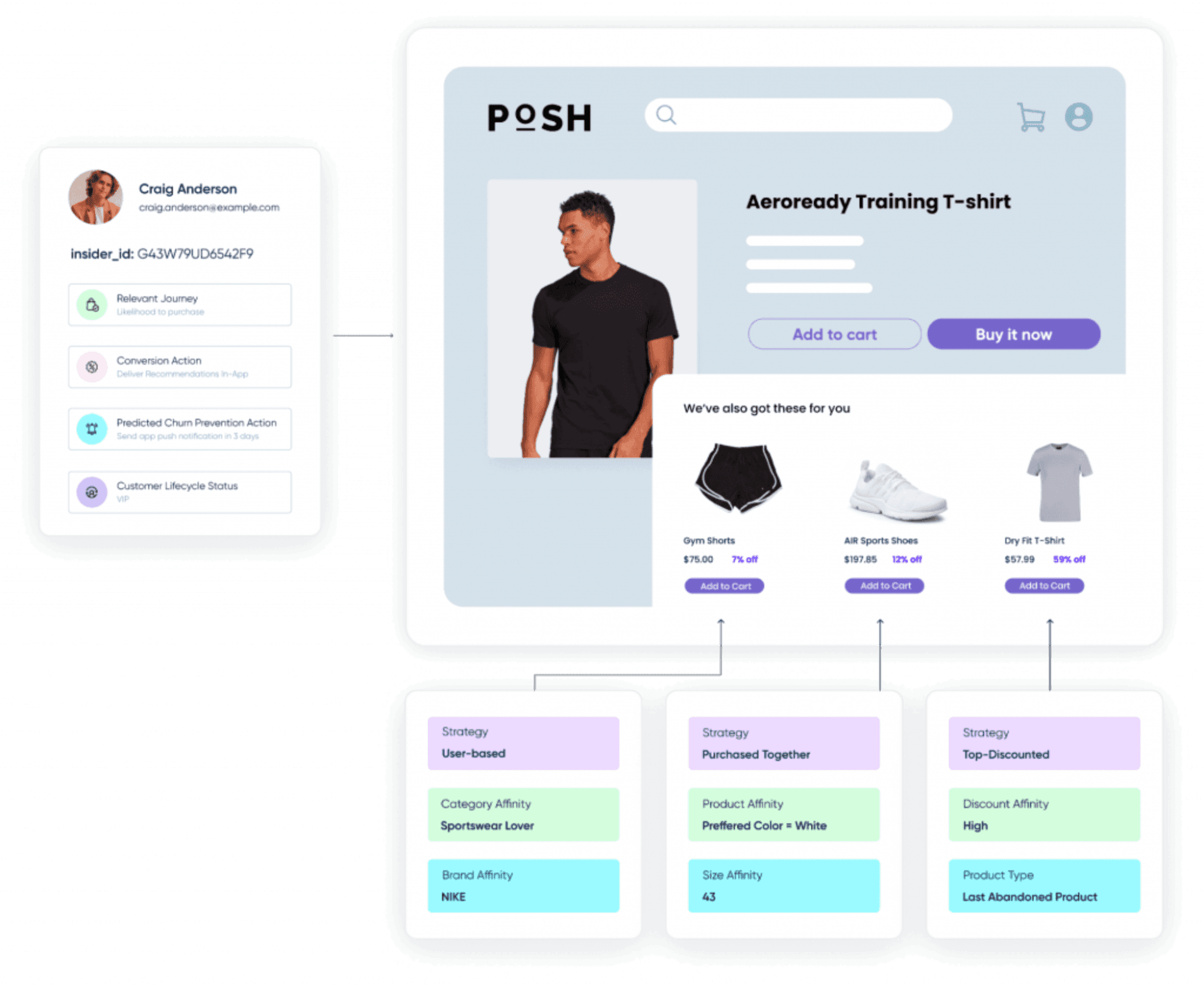
Source: Insider
How hyper-personalized AI recommendations work
Real-Time Adaptation: Recommendations adjust instantly based on current behavior, like items viewed or added to the cart.
Wisdom of the Crowd: AI taps into the preferences of similar customers, offering suggestions that align with popular choices.
Specific Product Attributes: AI considers brands, categories, and keywords to deliver spot-on suggestions.
Combination Filtering: Using both collaborative and content-based filtering, AI fine-tunes recommendations for higher accuracy.
Complementary Suggestions: AI suggests related products, encouraging customers to add more to their cart.
Hyper-personalization in action
AI-driven recommendation engines utilize machine learning and deep learning models to analyze customer data in real time. Key components include:
Behavioral Data Analysis: AI reviews each shopper’s actions, such as viewed products, time spent on specific items, and search queries to identify patterns and predict future interests.
Predictive Analytics: By processing historical data, predictive algorithms anticipate what products a customer might want next, even before they actively search for them.
Real-Time Personalization: AI adjusts recommendations dynamically as the customer browses, offering relevant products based on their current session activity.
Contextual and Demographic Targeting: AI incorporates external data, such as location, time of day, and demographic information to fine-tune recommendations that feel contextually relevant.
Platforms like Amazon and Netflix have set the standard in hyper-personalized recommendations by delivering suggestions based on user preferences and real-time behavior. AI tools like Algolia Recommend and Luigi’s Box also allow ecommerce brands to integrate these capabilities, helping them provide each customer with a uniquely curated shopping experience.
Imagine browsing a clothing store and only seeing items in your size that match your preferred styles based on past searches. That’s where AI is headed, moving from a general approach to a unique, one-on-one experience.
The benefits of AI-driven personalization
According to Salesforce, personalized recommendations already account for 24% of orders and 26% of total revenue, a testament to their impact. Major platforms like Amazon and eBay are leading the way with AI-powered personalization, and with the demand for personalization tech soaring (evidenced by a 159% rise in “Personalization Software” reviews on G2), hyper-personalization is quickly becoming a must-have.
Here’s what AI-driven personalization delivers:
Increased Sales and Conversions: Showing customers exactly what they’re interested in results in more conversions and higher sales.
Enhanced Customer Satisfaction: By creating shopping experiences that feel relevant and enjoyable, AI fosters positive connections to brands.
Improved Customer Retention: Personalized suggestions keep customers coming back, building brand loyalty with every visit.
Higher Average Order Value: With tailored add-ons and complementary items, AI personalization encourages larger purchases.
Optimized Marketing Spend: AI recommendations zero in on customer needs, maximizing ad spend efficiency and boosting ROI.
In 2025, AI-driven personalization will go beyond satisfaction, evolving into a powerful revenue driver. Each shopping experience will feel uniquely crafted, seamless, and perfectly in tune with every customer’s taste, setting a new standard in ecommerce.
Conversational AI chatbots and assistants
In recent years, AI chatbots and virtual shopping assistants have transformed how customers interact with online stores. Powered by advancements in artificial intelligence, these digital assistants can handle an ever-growing range of customer needs—from answering basic inquiries to providing personalized product recommendations. By 2025, conversational AI will play a major role in shaping the customer support landscape, helping ecommerce businesses deliver seamless, 24/7 assistance without the limitations of human support teams.
How Conversational AI chatbots work
At the heart of this transformation is natural language processing (NLP), which has made enormous strides in making interactions between humans and machines feel natural and engaging. NLP advancements allow chatbots to understand context, detect sentiment, and respond in a way that feels less like a script and more like a real conversation. This human-like interaction builds trust with customers, who tend to prefer AI chatbots over traditional ones, as they provide efficient assistance without sounding robotic.
As NLP continues to improve, AI chatbots are becoming more intuitive, understanding subtle language nuances, slang, and even regional phrases. By accurately interpreting customer queries, conversational AI can provide relevant and personalized responses, enhancing customer satisfaction and reducing frustration.
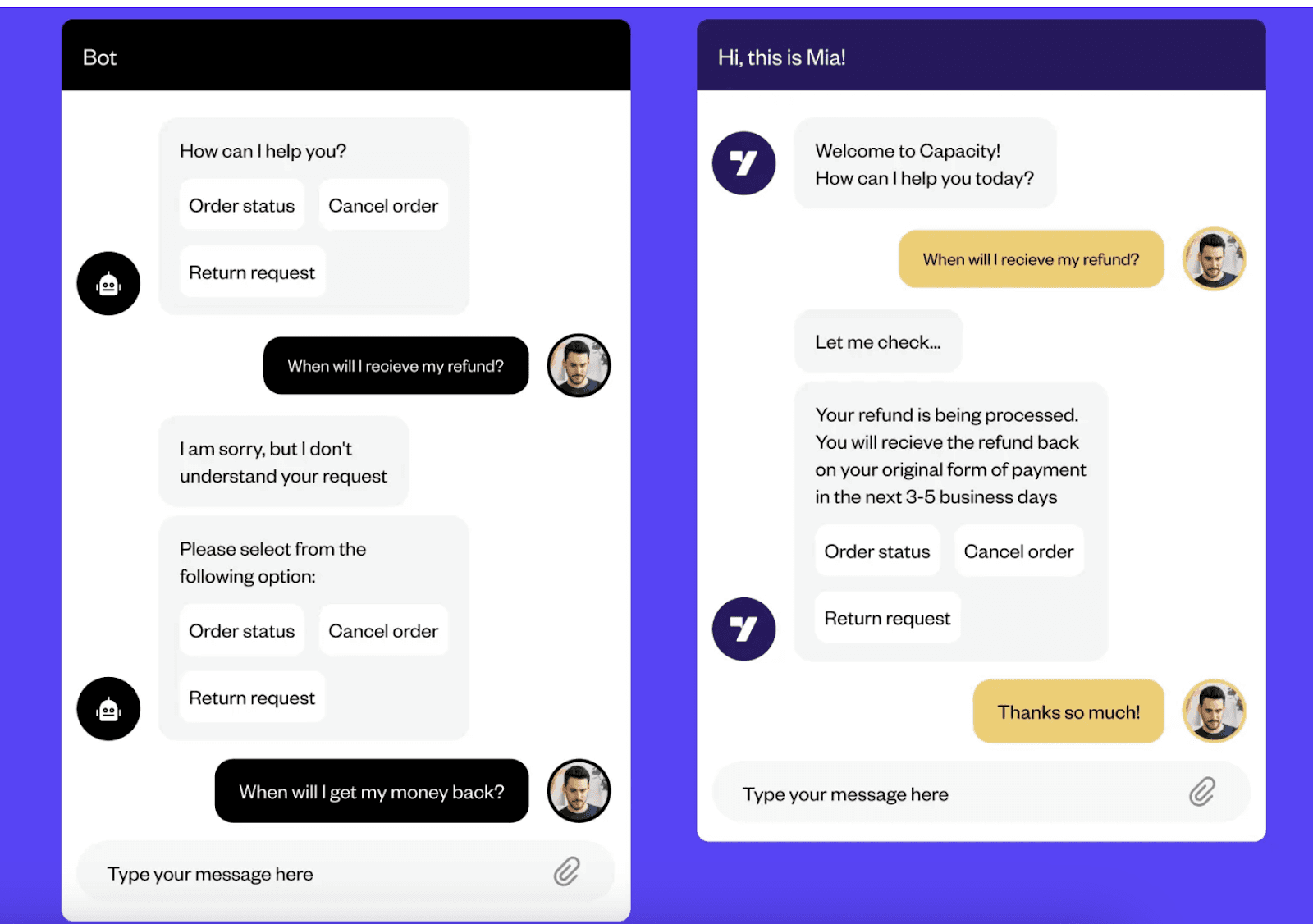
Source: Axrail
AI chatbots in action
AI-powered customer service
AI chatbots can respond to frequently asked questions, troubleshoot common issues, and handle routine tasks—like tracking orders or processing returns—without human intervention. This saves time for both customers and support teams while providing instant resolutions.
Live product recommendations
Conversational AI can guide customers through product selection based on their preferences, browsing history, or specific questions. For example, a customer looking for a birthday gift can chat with an AI assistant that suggests popular items based on the recipient's age, interests, or price range. These tailored recommendations create a more engaging shopping experience.
Interactive shopping guides
Virtual shopping assistants can act as interactive guides, helping customers navigate complex products or configurations, such as choosing the right laptop specifications or designing a custom piece of furniture. By asking a series of targeted questions, these AI guides help customers make informed decisions, improving satisfaction and increasing conversion rates.
The benefits of conversational AI
The use of AI chatbots and virtual assistants offers significant benefits to ecommerce businesses, including:
Improved efficiency and reduced wait times: AI-driven chatbots can handle multiple customer interactions simultaneously, reducing wait times and delivering prompt support even during peak hours.
Enhanced customer satisfaction: With conversational AI, customers receive faster, more accurate assistance and recommendations tailored to their needs, which increases overall satisfaction and brand loyalty.
Cost savings and scalability: By automating routine inquiries and processes, businesses save on support costs, allowing human agents to focus on complex issues. Additionally, AI chatbots can scale up instantly to handle increased demand without additional staffing.
Conversational AI is quickly becoming a vital tool for ecommerce businesses looking to enhance customer support with a personal touch. With advanced NLP capabilities, AI-powered assistants feel more like helpful shopping companions than just scripted bots, providing genuine value through efficient, human-like interactions. As AI continues to evolve, conversational AI will redefine customer support, offering seamless, satisfying, and scalable solutions that meet the needs of today’s fast-paced online shoppers.
AI-powered speed optimization
Slow websites have long been a challenge for ecommerce. Studies show that even a 1-second delay in page load time can lead to a 7% drop in conversions, while 40% of shoppers abandon sites that take more than 3 seconds to load. Improving site speed has therefore been a priority for ecommerce brands, with solutions ranging from image compression to content delivery networks. However, users—and Google—are now looking for more than just fast. Instant loading is quickly becoming the new gold standard.
Now, AI is introducing powerful ways to make this possible. By predicting user behavior and preloading content, AI-driven speed optimization solutions create an experience that goes beyond fast to feel virtually instant. As speed becomes an essential benchmark for customer engagement, these AI innovations enable ecommerce sites to meet the rising demand for instantaneous interactions, setting a new standard in online shopping.
How AI-powered speed optimization works
In the realm of AI, Artificial Intelligence Optimization (AIO) is emerging as a new way to speed up your site. Speculation Rules API, developed by Google, allows developers to instruct the browser on which pages to preload, setting the stage for faster navigation. Uxify’s Navigation AI takes this a step further by incorporating AI and machine learning to analyze user behavior in real time, as well as leveraging historical data. This enables Navigation AI to make personalized predictions at the individual-visitor level about which pages they are likely to visit next. By combining the Speculation Rules API with these advanced insights, Navigation AI predictively preloads pages before users even click, creating a browsing experience that feels almost instantaneous.
To illustrate the above, if a user is browsing through a product category, Navigation AI anticipates their next move—such as clicking on a specific product page—and preloads it, ensuring the page is ready the moment they click. This predictive, AI-enhanced navigation removes traditional delays, making browsing feel seamless.
With the Speculation Rules API and Navigation AI working together, sites can optimize only the most relevant pages, balancing speed with efficiency. The result is a fluid, uninterrupted experience that keeps users engaged and satisfied.
AI speed optimization in action
Here is how Navigation AI could help retailers across industries to deliver instant experiences:
Electronics store
An e-commerce site specializing in electronics implements Navigation AI to improve user experience during product comparisons. If a customer is viewing laptops, the AI can predict they might want to compare specifications with other models. It preloads the recommended product pages, allowing the user to switch between items seamlessly without delays.
Grocery delivery service
A grocery delivery platform utilizes Navigation AI to streamline the shopping process. When a user frequently purchases certain items, such as snacks and beverages, the AI anticipates their next clicks when they log in. As soon as the user begins browsing, Navigation AI preloads the pages of their most visited purchases, enabling instant navigation to them.
Beauty products retailer
An online beauty store implements Navigation AI to enhance the shopping experience during promotional events. If a user is browsing a skincare category, the AI can predict interest in related sales or similar products and proactively load them in the browser so they are instantly loaded when the user decides to navigate to them. In some cases Navigation AI can predict where your user will click next up to 4 seconds before the user makes the click.
These scenarios illustrate how Navigation AI can enhance the online shopping experience by anticipating user needs, reducing load times, and providing a more personalized and seamless interaction with the ecommerce platform.
Benefits of AI-powered speed optimization
Enhanced User Experience: With faster load times, users experience a seamless, uninterrupted journey that keeps them engaged and reduces bounce rates.
Higher Conversion Rates: Every second saved in load time can significantly increase conversions, as customers are more likely to complete purchases without delays.
Improved Customer Retention: A faster site is more enjoyable to browse, encouraging return visits and fostering brand loyalty.
Optimized Core Web Vitals: Faster loading directly impacts Core Web Vitals scores, improving SEO rankings and making the website more discoverable.
In 2025, AI-powered speed optimization will become increasingly important in ecommerce, with Navigation AI playing a significant role. By making websites feel effortlessly responsive, businesses can create a fast, fluid browsing experience that meets modern customer expectations and drives sustainable growth.
AI-driven inventory and supply chain optimization
Inventory and supply chain optimization through AI involves using advanced algorithms to manage inventory levels, streamline supply chains, and ensure smooth delivery processes. By analyzing historical data, demand patterns, and market trends, AI enables ecommerce businesses to maintain just the right amount of stock, reducing excess inventory and related costs while meeting customer demand efficiently.
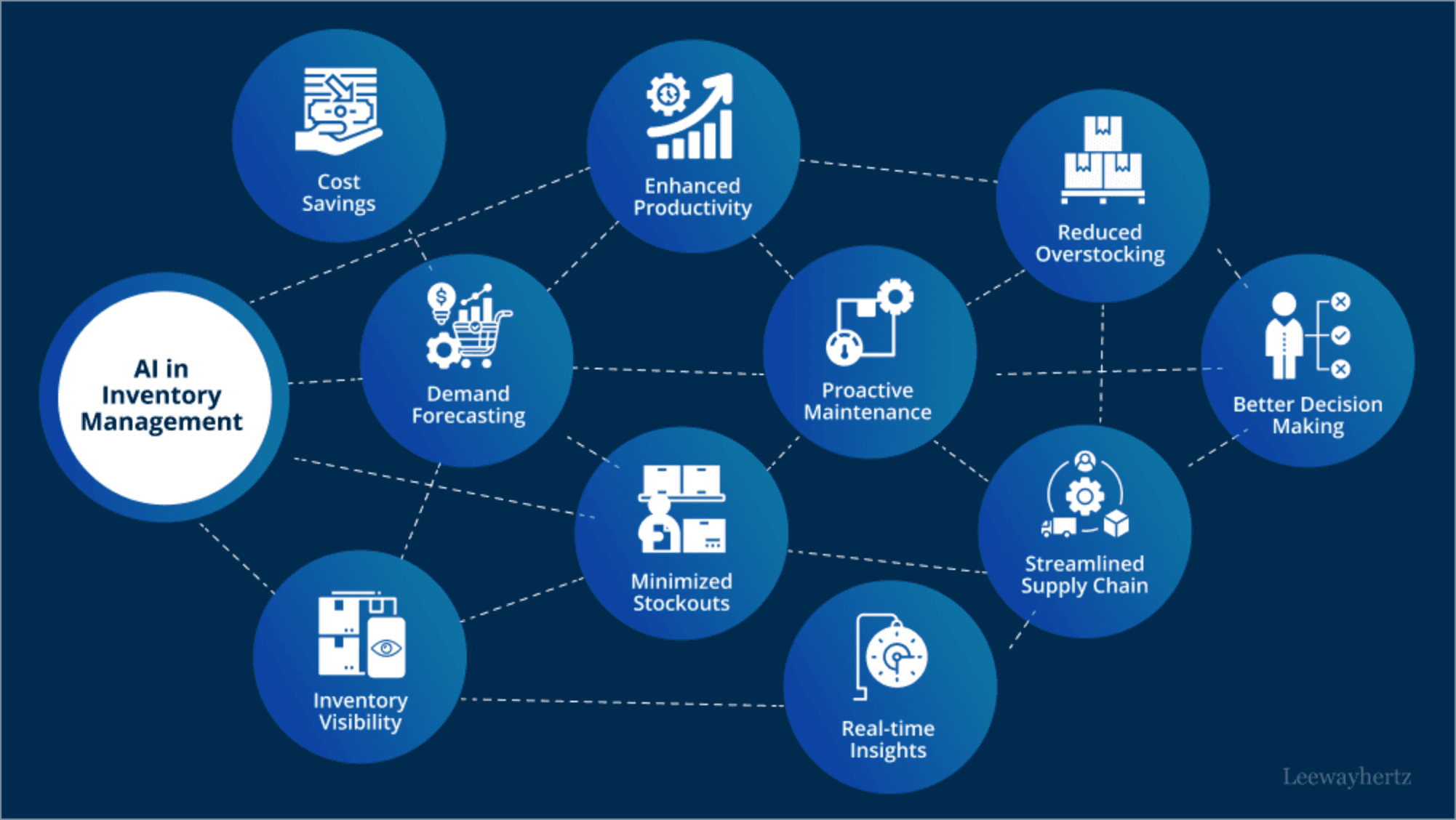
Source: AllianceTech
How AI-powered inventory optimization works
AI-powered inventory and supply chain management relies on data analysis and machine learning to forecast demand accurately. Here’s how the process typically unfolds:
Data Collection: AI gathers data from various sources, including historical sales data, market trends, website traffic, and external feedback.
Pattern Analysis: Using machine learning, AI detects patterns and correlations, predicting demand for specific products and adjusting stock levels in real-time.
Automated Adjustments: AI systems can automatically set reorder points, optimize inventory quantities, and suggest dynamic pricing based on supply and demand.
Supply Chain Automation: AI streamlines logistics tasks, including order tracking, warehouse management, and delivery scheduling, enhancing operational efficiency.
AI-driven inventory optimization in action
For merchants, tools like Prediko provide AI-powered forecasting that streamlines procurement processes. For example, Kimai, an online jewelry brand, reduced delivery time by 43% and production costs by 11% by integrating its stores with Prediko.
By leveraging these AI solutions, Shopify retailers can significantly improve their inventory management, leading to greater operational efficiency and enhanced customer experiences.
Benefits of AI-driven inventory and supply chain optimization
Reduced stockouts and excess inventory: Accurate demand forecasting prevents stockouts while reducing overstock, cutting costs related to unsold inventory.
Optimized supply chain efficiency: By automating logistics tasks, businesses reduce time and costs associated with warehousing and shipping.
Improved offering: AI-driven inventory management ensures that popular items remain in stock, supporting faster delivery and a better shopping experience.
Increased profitability: Optimized inventory levels and dynamic pricing strategies help maximize profitability, especially during high-demand periods.
As ecommerce grows, AI-driven inventory and supply chain optimization becomes essential for managing the complexities of demand and logistics, setting businesses up for success in 2026 and beyond.
Visual search
Imagine effortlessly finding your favorite products just by snapping a photo. With visual search, that dream is becoming a reality. This cutting-edge AI-powered technology enables customers to search for products using images, screenshots, or even pictures taken in-store, making online shopping faster, easier, and more accessible. As we move into 2025, visual search is set to evolve even further. Enhanced AI algorithms will improve image recognition accuracy, allowing for more nuanced searches. For instance, users may be able to search for items based on style elements, colors, or even textures rather than just matching images.
No longer do you need to struggle to describe what you’re looking for in words—now you can simply show it. Retailers like Target, ASOS, and IKEA are already leveraging the power of visual search to enhance the shopping experience and drive sales.
How visual search works
Visual search utilizes advanced AI algorithms to analyze images uploaded by users. When you upload an image, the system identifies and matches it to similar products in the retailer's inventory, helping you find exactly what you’re looking for in an instant. This technology is particularly effective in the fashion and home decor sectors, where discovering items that fit a specific aesthetic is often much easier with an image than with keywords. Moreover, visual search provides an accessible shopping experience for those with disabilities, allowing them to browse using images rather than relying solely on text or audio descriptions.
To capitalize on the advantages of visual search, retailers should ensure their products are featured on major visual search engines like Google Lens, Bing Visual Search, Pinterest Lens, and Amazon Camera Search.

Source: Minta
Visual search in action
A customer sees a stylish lamp in a store and captures a quick photo. Later, they use that image in a visual search tool to find the exact lamp—or a similar one—online. Popular visual search solutions like Visdea and BIRSE enable users to do just that.
Benefits of Visual Search
This not only enhances customer engagement but also increases conversion rates, as shoppers can effortlessly find what they're looking for without struggling to describe it in words. By integrating visual search capabilities, merchants can provide a more seamless and satisfying shopping experience, ultimately driving sales and customer loyalty.
Increased Conversion Rates: By allowing customers to find products faster, visual search shortens the path to purchase, increasing the likelihood of conversion.
Enhanced Accessibility: Visual search enables users with physical or hearing impairments to browse products more easily by using images rather than relying on text or audio.
Improved Customer Experience: With a simplified search journey, visual search makes online shopping more intuitive, connecting physical and online shopping experiences.
Brand Differentiation: Visual search technology is still an emerging trend, so retailers who adopt it early can stand out in a competitive marketplace.
In 2025, visual search will become an essential tool for enhancing customer interaction with brands and products in a more visually-oriented environment. Retailers who adopt this technology will improve their offerings and foster stronger connections with customers, leading to a more engaging shopping experience.
AI pricing optimization
Pricing optimization is all about finding that sweet spot for product prices to maximize profits, maintain competitiveness, and keep customers happy. In the fast-paced world of ecommerce, this task can be quite tricky, thanks to constant fluctuations in manufacturing costs, competitor pricing, customer demand, and acquisition expenses. That’s where AI-powered pricing optimization, often referred to as "dynamic pricing," comes into play. By harnessing advanced algorithms, businesses can adjust prices in real time, responding swiftly to the ever-changing market landscape.
How AI pricing optimization works
So, how does this dynamic pricing magic happen? AI-driven dynamic pricing relies on machine learning algorithms that sift through massive amounts of data—think historical sales figures, competitor pricing, demand patterns, and even external factors like seasonal trends and supply chain costs. These AI tools are always on the lookout, continuously monitoring these variables and suggesting optimal price adjustments in real time. This data-driven approach ensures that pricing aligns perfectly with market conditions, allowing businesses to react quickly to demand spikes, competitive discounts, or stock changes.
By leveraging techniques like predictive analytics and demand forecasting, AI can pinpoint the best price points for different scenarios, helping businesses boost revenue while minimizing the need for manual adjustments.
AI Pricing optimization in action
Retailers can harness AI-driven pricing optimization tools to stay competitive in the market. For instance, solutions like Prisync and Aument track competitor prices and provide dynamic pricing suggestions, while Dynamic Pricing by Omnia automates pricing adjustments based on sales trends. An example success story involves Justtools, an Australian retailer offering power and cordless tools, that were able to enhance their sales by 5.5% using AI dynamic pricing strategies.
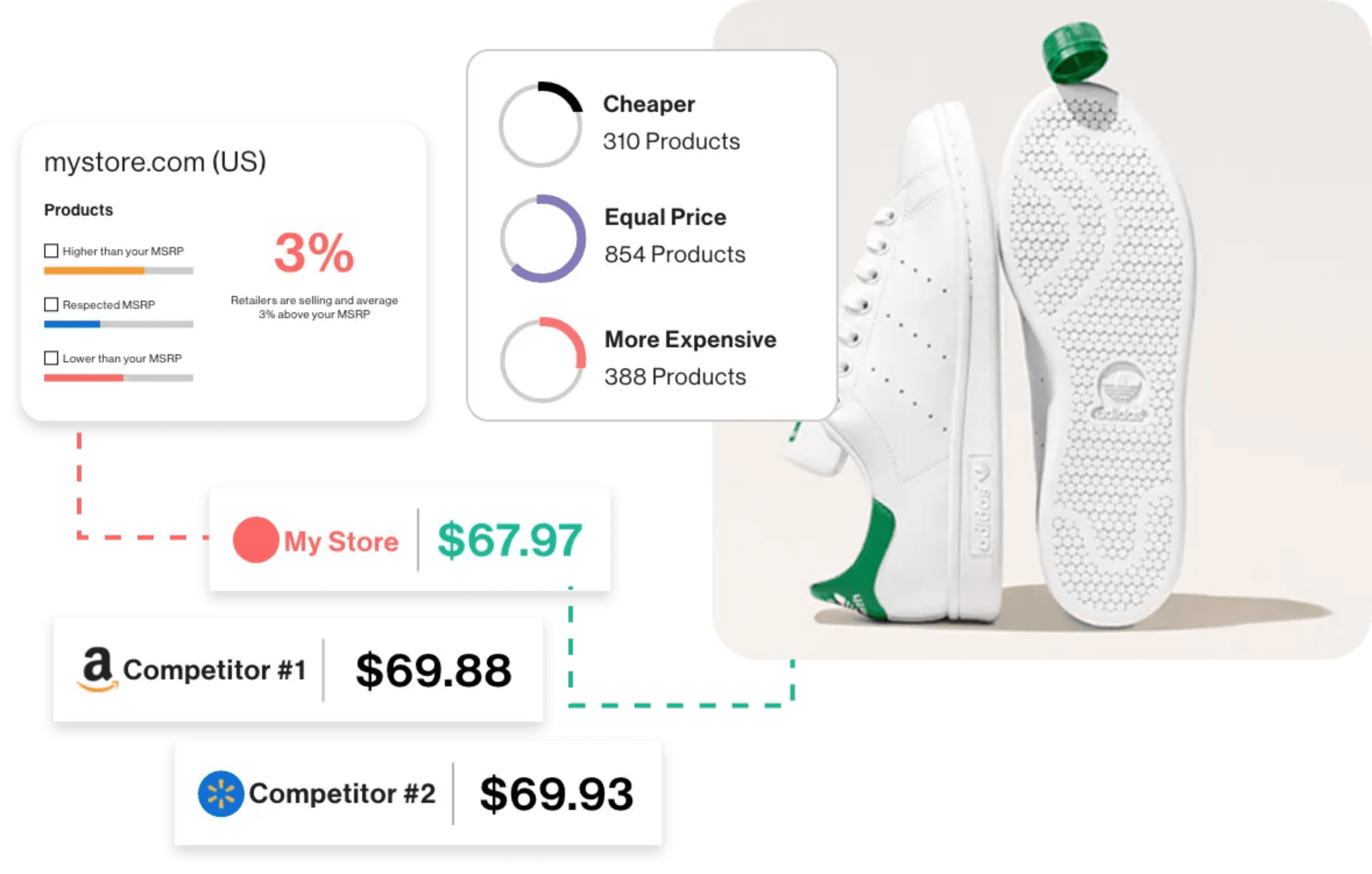
Source: Intelligence Node
Benefits of AI pricing optimization
Increased revenue: AI identifies optimal price points that maximize profitability while staying competitive.
Real-time responsiveness: Dynamic pricing allows businesses to adapt instantly to market shifts, demand changes, or competitor discounts.
Enhanced competitiveness: By staying agile in pricing, companies can remain attractive to customers without compromising margins.
Reduced manual workload: Automated pricing adjustments streamline operations, freeing up resources for other strategic tasks.
By 2025, AI-driven pricing optimization is likely to become an important asset for ecommerce businesses, aiding them in adapting to market changes. This strategy can help improve profitability and customer satisfaction by offering fair prices that reflect market conditions. Smaller retailers that implement these AI solutions may find themselves better positioned to compete and succeed in a rapidly changing marketplace.
Augmented Reality for virtual try-on experiences
Augmented Reality (AR) and Virtual Reality (VR) are transforming ecommerce by making online shopping experiences more accessible, immersive, and interactive. These AI-powered technologies allow customers to visualize products, experience virtual try-ons, and explore virtual stores, making online shopping easier for everyone, especially those with disabilities or limited access to physical stores.

Source: WannaFashion
How AR/VR experiences work
AI-driven AR and VR solutions use computer vision, deep learning, and machine learning to create immersive experiences:
Virtual Try-Ons: AI-powered AR enables customers to “try on” clothing, makeup, and accessories virtually, with accurate overlays tailored to each individual’s appearance.
3D Product Visualization: Machine learning algorithms generate realistic, 3D product models, allowing customers to view items from multiple angles and get a sense of size and scale.
Virtual Store Experiences: VR technology recreates physical store environments, allowing users to browse and interact with products virtually, making shopping accessible for those who cannot visit in person.
As you consider implementing AR and VR solutions, it’s essential to research the specific benefits and needs of your users thoroughly. Look for options that seamlessly integrate with your current architecture to enhance accessibility and comply with relevant regulations. In 2025, the world is moving toward greater inclusivity, and your business has an opportunity to make a meaningful impact—while also gaining a competitive edge.
AR/VR in action
Retailers can leverage AR and VR technologies to enhance their online shopping experiences and stand out in a competitive market. LEVAR 3D & AR Platform allows stores to integrate 3D models and AR experiences, enabling customers to visualize products in their own space, which can reduce product returns. Poplar AR/3D Product Viewer enables customers to view items using AR, facilitating virtual try-ons and enhancing engagement. Dopple Visual offers configurable 3D models with features like auto-rotate and detailed analytics insights to enrich the shopping experience. Additionally, Auglio Eyewear Virtual Try-On specializes in AR solutions for eyewear, cosmetics, and jewelry allowing customers to see how products look on their faces.
By leveraging these AR applications, merchants can boost customer engagement, reduce return rates, and gain a competitive edge in the evolving ecommerce landscape. For instance, Artiplanto, a retailer of artificial plants and decor, recorded a significant boost in their online sales after integrating AR and 3D solutions. The result was a $60,000 increase in sales within the first month. Additionally, 33% of visitors who used the AR feature made a purchase within three months, showcasing the effectiveness of AR in driving conversions.
Benefits of AR & VR experiences
Enhanced Accessibility: AR and VR make it possible for customers with disabilities to explore and experience products easily.
Decreased returns: Virtual try-ons and 3D product views give customers a better understanding of products, reducing uncertainty and return rates.
Seamless Integration: AI-powered AR/VR solutions can be easily incorporated into e-commerce platforms, enhancing accessibility without disrupting existing infrastructure.
Competitive Advantage: By embracing AR/VR for accessibility, businesses can appeal to a wider audience, meeting the growing demand for inclusive and immersive shopping experiences.
Enhanced AI algorithms will enable more accurate product visualization and personalized shopping experiences, allowing customers to see how products fit into their lives before making a purchase. Advances in mobile AR & VR technology will make these experiences more accessible, enabling seamless integration with popular ecommerce platforms. Retailers will increasingly adopt AR & VR features such as virtual try-ons and interactive product displays, which not only enhance user engagement but also significantly reduce return rates. As AR & VR technology continues to evolve, it will play a crucial role in shaping how consumers shop online.
AI-powered fraud detection
As ecommerce expands, so does the risk of fraud and cyberattacks, making AI-powered fraud detection an essential trend in the industry. By analyzing massive amounts of data, AI solutions can detect and prevent fraudulent activities in real-time, providing robust security for both businesses and customers.
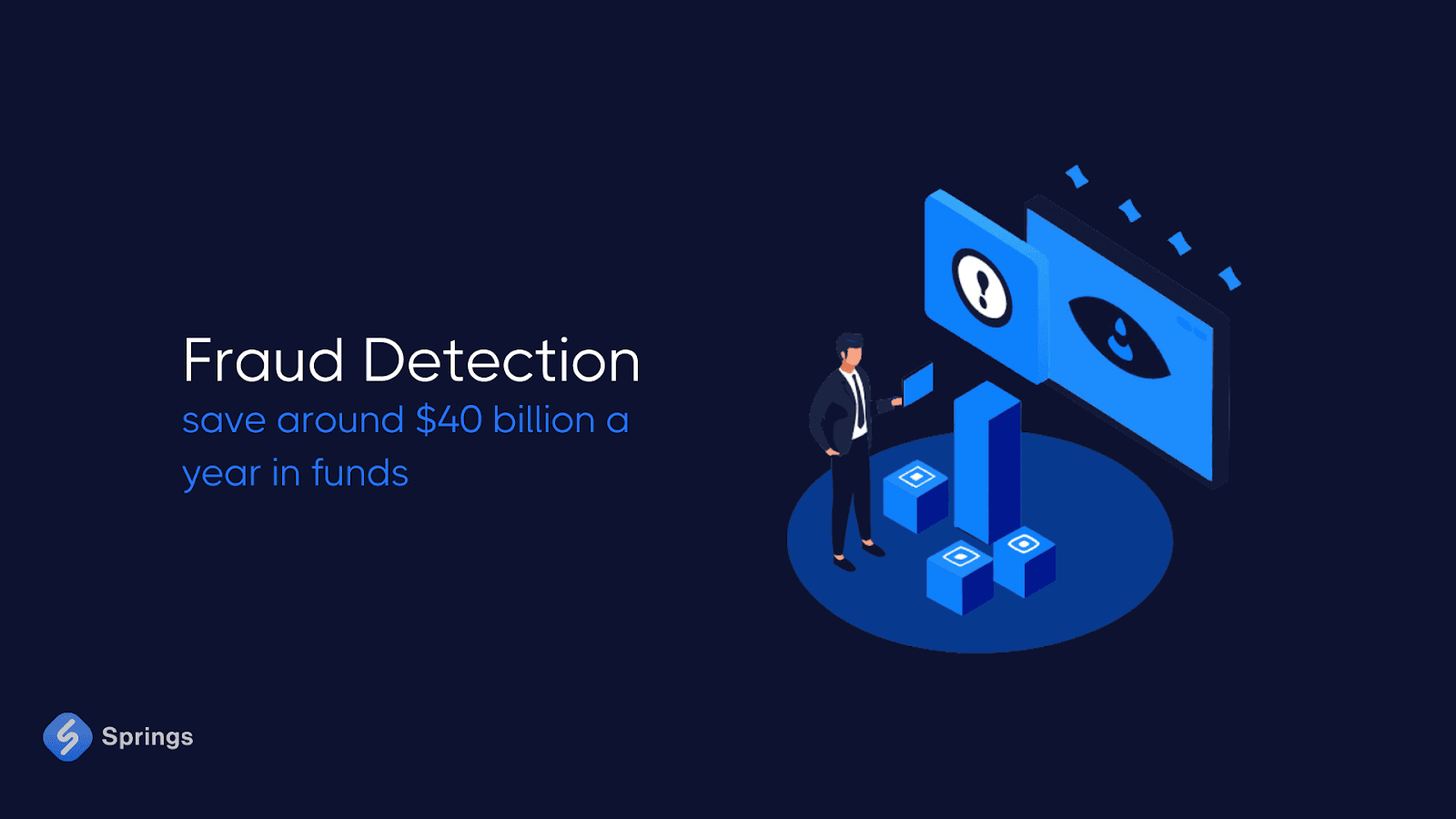
Source: Springs
How AI-driven fraud detection works
AI fraud detection systems use machine learning algorithms to evaluate various factors, such as customer behavior, location, payment methods, order history, and transaction frequency. By identifying suspicious patterns, these systems can flag or block fraudulent transactions before they occur. This predictive capability helps ecommerce businesses stay one step ahead of evolving cyber threats, adapting continuously as new risks emerge.
In 2025, AI fraud prevention tools are expected to evolve significantly with enhanced machine learning algorithms capable of analyzing larger datasets to detect complex fraud patterns in real time. These tools will increasingly incorporate behavioral analytics to create detailed user profiles, enabling the identification of anomalies that indicate suspicious activity. Integration with multi-factor authentication will provide an additional layer of security, while real-time decision-making capabilities will allow businesses to react instantly to potential threats. Furthermore, increased collaboration and data sharing between organizations will enhance fraud detection across industries, and adaptive learning techniques will enable AI systems to continuously improve in response to emerging fraud trends.
AI-powered fraud detection in action
AI-powered fraud detection tools have been shown to reduce financial losses substantially. Juniper Research estimates that by the end of 2024, AI-based fraud detection will save businesses $11 billion annually. These tools play a key role in safeguarding customer data, a priority especially important to Gen Z consumers, who place high value on privacy and data security.
For store owners looking to enhance fraud detection and prevention, several effective AI-powered applications are available. NoFraud offers real-time automated fraud detection and chargeback protection, utilizing advanced algorithms to analyze transactions. Kount provides a robust platform that analyzes transaction data to detect and prevent fraud, offering customizable rules and real-time alerts.
Benefits of AI-powered fraud detection
Reduced financial losses: AI prevents fraud, protecting businesses from significant revenue loss.
Enhanced customer trust: By prioritizing security, businesses build trust with customers, especially privacy-conscious younger demographics.
Real-time protection: AI identifies and stops suspicious activities instantly, mitigating potential threats before they escalate.
Data security compliance: AI-powered systems support businesses in meeting data protection regulations, which is increasingly critical for maintaining customer loyalty.
AI-powered fraud detection is becoming a vital tool for ecommerce businesses in 2025, ensuring secure transactions and customer peace of mind.
AI-Driven content creation
AI-driven content creation is revolutionizing how ecommerce businesses generate everything from product images and videos to creating a logo and blog posts. By leveraging advanced machine learning and natural language processing tools, AI automates the content creation process, dramatically reducing the time and resources needed to produce high-quality media while enabling personalized content at scale.
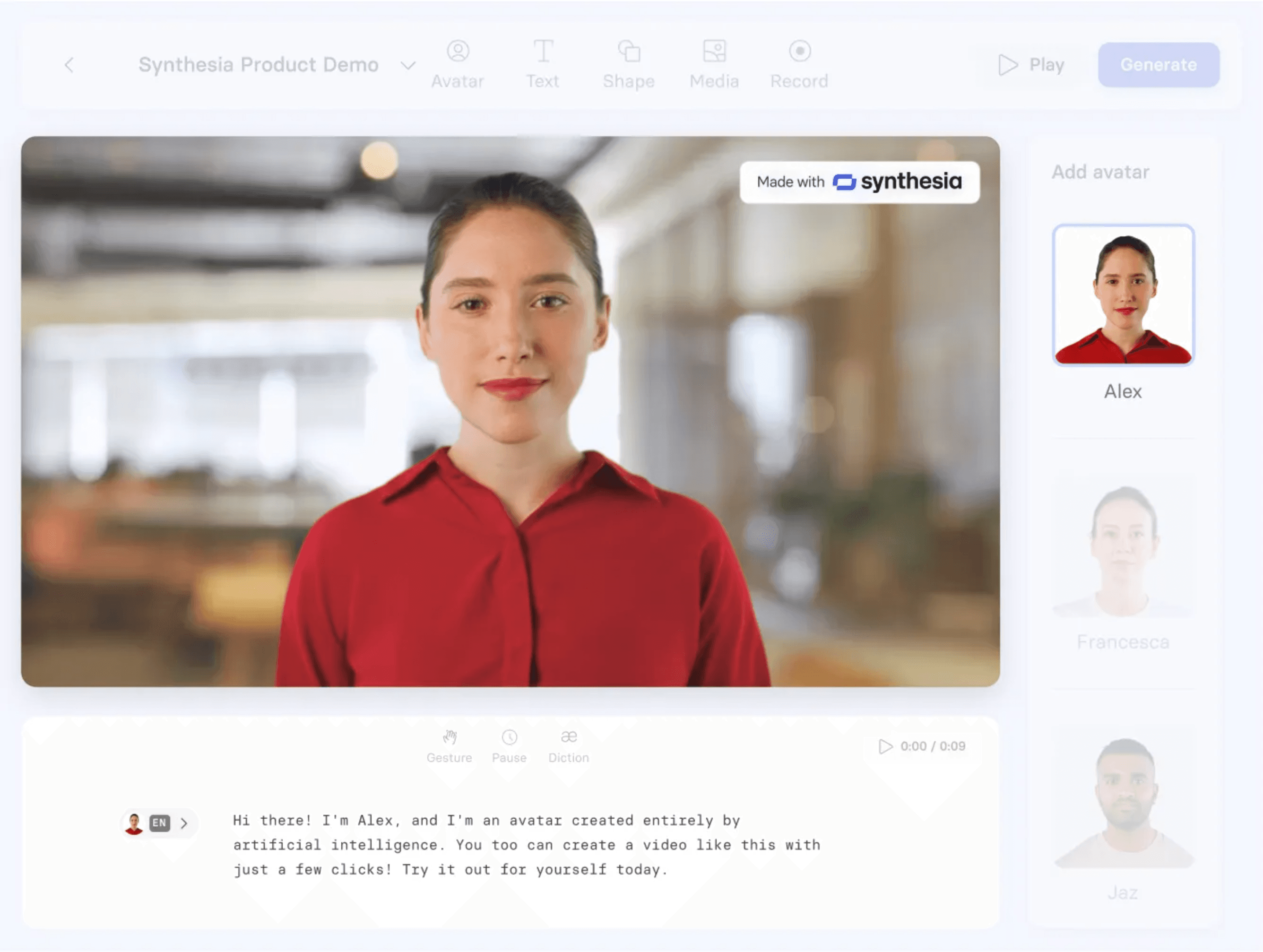
Source: Synthesia
How AI content creation works
These AI-powered tools utilize sophisticated algorithms trained on vast datasets to understand context, optimize visuals, and craft compelling text. Here’s how they work:
Product images: AI can produce realistic, versatile product mockups, providing multiple angles and styles without the need for traditional photo shoots.
Ads: AI tools analyze audience behavior and generate ad copy that resonates with specific demographics, improving engagement and conversion rates.
Video Content: AI can automatically create, edit and trim video content for ecommerce brands, from product showcases to promotional videos, by analyzing footage and identifying key moments or products.
Blogs and Descriptions: Natural language generation (NLG) tools like Shopify's Product Description Generator and Jasper.ai can write engaging, SEO-optimized product descriptions, blog posts, and guides within seconds, saving content teams considerable time.
These AI tools adapt based on user input, allowing brands to make quick adjustments and refine content with ease. For example, text generators can analyze brand tone and style, ensuring consistency across all written materials.
By 2025, AI-driven content creation in ecommerce is expected to become more sophisticated, enabling businesses to generate highly personalized and engaging content at scale. Advancements in natural language processing and machine learning will allow for the creation of dynamic product descriptions, tailored marketing materials, and interactive customer experiences. This evolution will enhance customer engagement and streamline content production processes, providing a competitive edge in the digital marketplace.
AI content creation in action
There are a number of AI-driven content creation solutions to streamline text, photo, ad, and video production for ecommerce businesses. Jasper.ai provides tools for generating compelling product descriptions, blog posts, and social media content, helping businesses quickly produce SEO-optimized copy. Canva offers AI-enhanced design tools that create customizable product mockups, social media graphics, and ads, making it easy for merchants to maintain a consistent visual style. For ads, Adwisely uses AI to optimize ad campaigns on platforms like Facebook and Google, tailoring ad copy and targeting based on audience behavior to improve engagement. VEED AI Video Generator and Synthesia focus on video content, using AI to help brands create engaging product and explainer videos with customizable visuals and AI-generated avatars.
Benefits of AI content creation
Saves Time and Resources: AI streamlines content production, reducing the need for extensive design, copywriting, and editing resources.
Consistency Across Channels: Automated tools ensure consistent branding, tone, and style across various content formats, enhancing brand identity.
Scalable Personalization: AI enables brands to create tailored content that resonates with individual customers, whether in product descriptions or ad copy, improving user engagement.
Improved Conversion Rates: AI-powered visuals and descriptions are optimized to capture attention and drive conversions, helping businesses maximize the impact of their content.
AI in content creation opens new possibilities for ecommerce brands, enabling them to produce high-quality media quickly and at scale. As these tools continue to evolve, they will play a key role in helping businesses stand out in a crowded digital landscape, creating content that’s both impactful and efficient.
AI-Driven loyalty programs
AI-driven loyalty programs transform how e-commerce brands engage with customers by tailoring rewards and experiences to each person’s unique behavior, preferences, and purchase history. Leveraging advanced algorithms, these programs go beyond basic points and discounts, offering a deeply personalized approach that strengthens relationships, boosts satisfaction, and drives repeat sales.
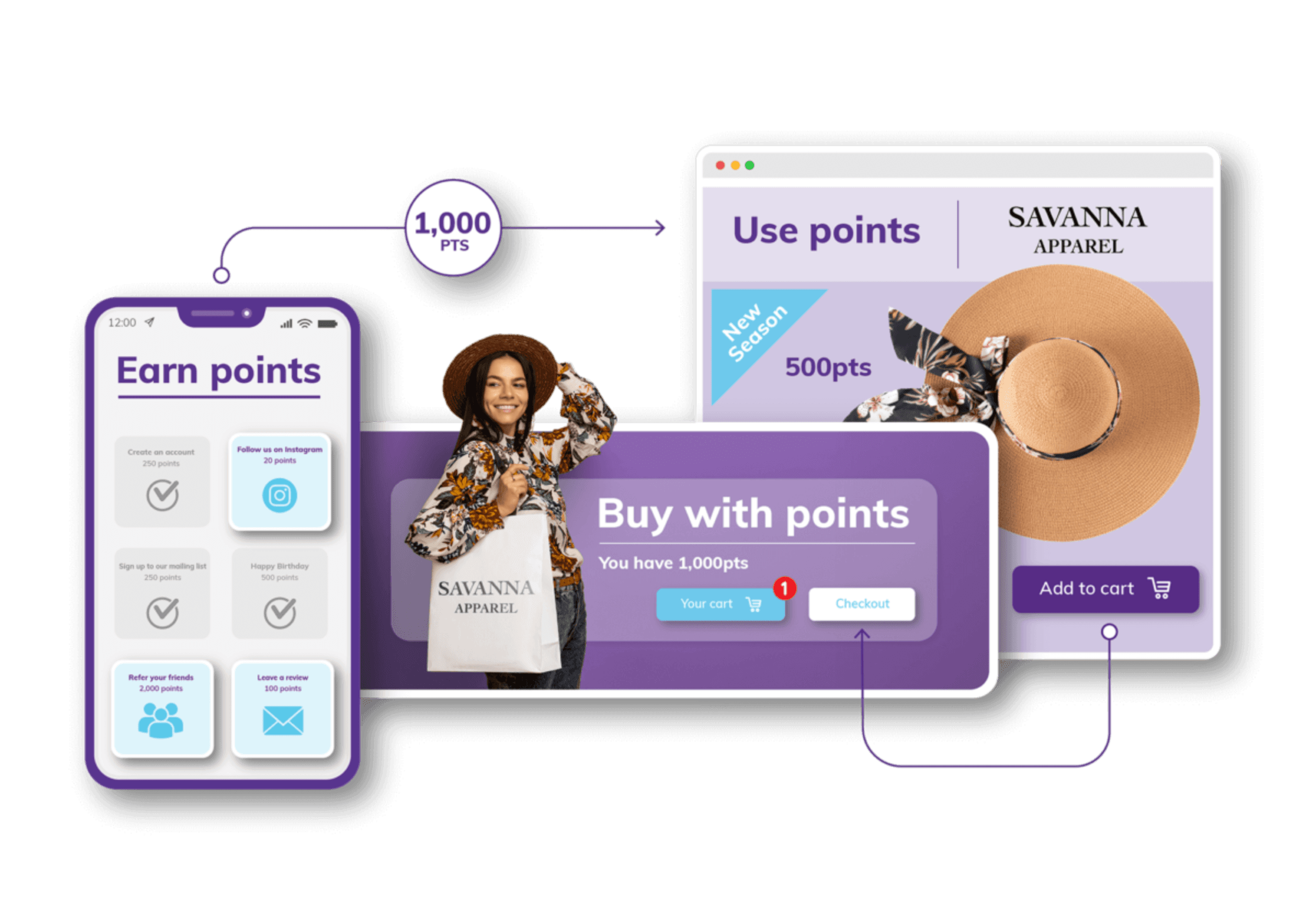
Source: LoyaltyLion
How AI loyalty programs work
AI-driven loyalty programs collect and analyze data from multiple sources, including purchase patterns, browsing history, demographic information, and customer interactions. Key AI functionalities include:
Predictive analytics: AI predicts which incentives (such as discounts, exclusive access, or personalized rewards) will be most effective for each customer, tailoring offers to individual preferences.
Personalized rewards: AI personalizes loyalty rewards by analyzing a customer’s shopping habits and favorite products, ensuring each reward feels relevant and meaningful.
Real-time engagement: By analyzing data in real time, AI can trigger loyalty rewards based on customer actions, such as awarding points for frequent purchases or offering special rewards after a customer reaches a certain milestone.
Sentiment analysis: AI interprets customer feedback and sentiments from reviews or social media interactions, allowing businesses to adjust loyalty programs to improve customer satisfaction.
By 2025, AI-driven loyalty programs are expected to become more sophisticated, leveraging advanced machine learning algorithms to deliver highly personalized, real-time rewards based on individual customer behaviors and preferences. These programs will dynamically adapt to each customer's journey, offering tailored incentives that enhance engagement and satisfaction. Additionally, there will be a growing emphasis on integrating eco-conscious rewards, reflecting the increasing consumer demand for sustainability in loyalty initiatives.
See AI-powered loyalty programs in action
Brands like Sephora and Starbucks are leaders in AI-driven loyalty programs. Sephora’s Beauty Insider program uses predictive analytics to offer tailored rewards based on customer buying behavior, while Starbucks’ AI-powered rewards program provides personalized offers through their mobile app, encouraging higher engagement. Similarly, Amazon Prime offers exclusive benefits and personalized recommendations, strengthening customer loyalty by delivering rewards that align with individual user needs.

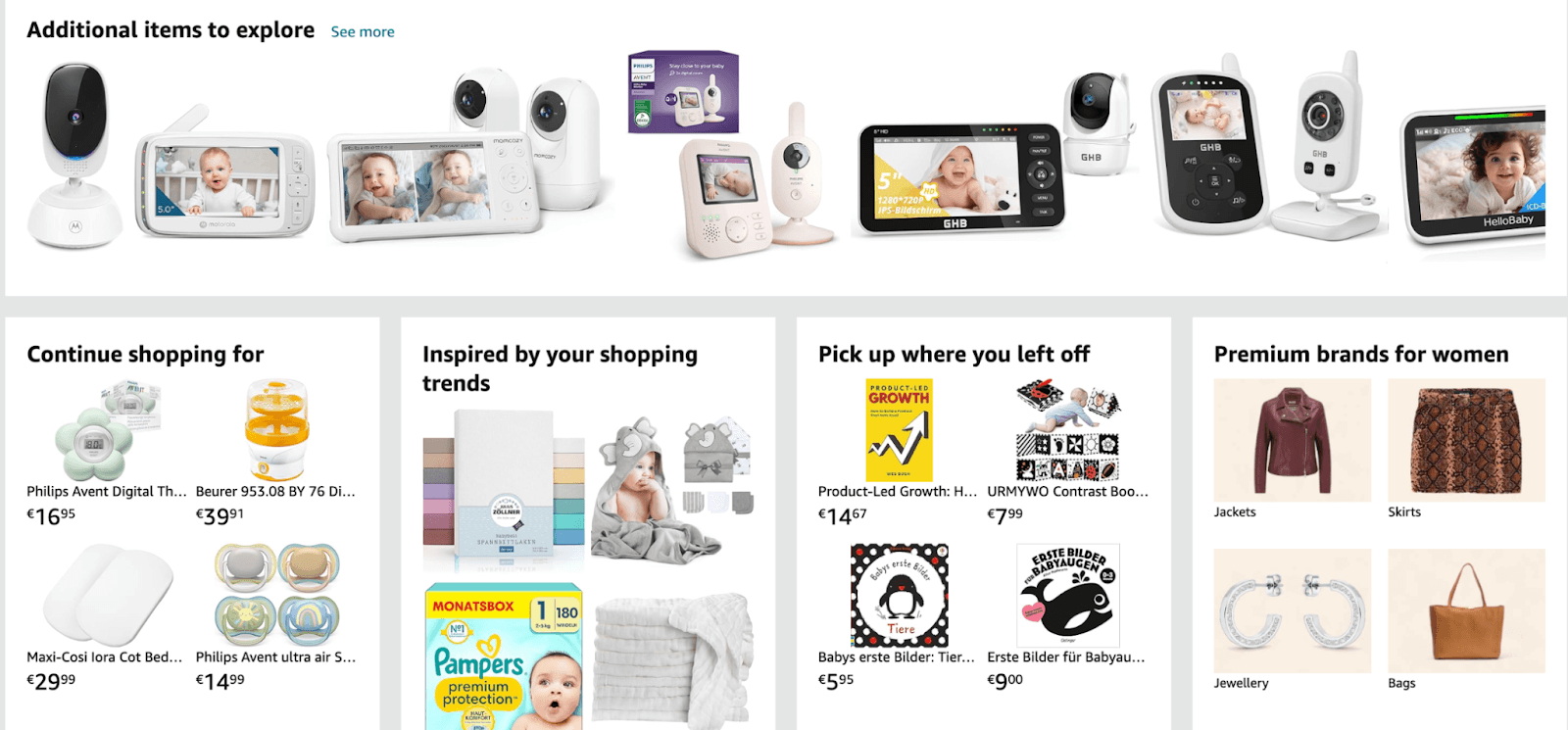
Tools like LoyaltyLion and Antavo are also popular AI platforms that help e-commerce brands create customized loyalty programs, analyzing customer behavior to offer rewards that feel genuinely valuable to each customer.
Benefits
Enhanced Customer Retention: Personalized loyalty programs encourage repeat purchases, increasing customer lifetime value.
Increased Engagement: AI-driven rewards feel more relevant, leading to higher engagement and more frequent interactions.
Cost-Efficiency: Targeting specific, high-value customers with tailored rewards optimizes budget spend on loyalty initiatives.
Stronger Brand Loyalty: Customers feel recognized and appreciated, fostering emotional loyalty and encouraging positive word-of-mouth.
Higher Conversion Rates: Relevant, personalized rewards entice customers to return and complete purchases, boosting conversion rates.
In the competitive landscape of 2025, AI-driven loyalty programs offer e-commerce brands a powerful way to deepen customer relationships and stand out. By using AI to create dynamic, personalized rewards, businesses can ensure that loyalty programs not only enhance customer satisfaction but also contribute to long-term growth.
AI-powered ads automation
AI-driven ad automation is transforming how ecommerce merchants approach advertising by automating campaign management, targeting, and optimization. Using machine learning algorithms, AI tools automatically refine ad strategies based on real-time data, delivering highly relevant ads to the right audience without the need for constant manual adjustments.
How AI ads automation works
AI ad automation tools analyze vast amounts of customer data, such as browsing behavior, purchase history, and engagement patterns, to predict which ads will be most effective for each segment. AI tools like predictive analytics and machine learning then adjust ad targeting, creative elements, and even budgets based on performance metrics.
As we move into 2025, AI ads automation will likely evolve further, enabling real-time personalization at scale. This means that AI will not only improve ad relevance but also adapt ads to individual behaviors, continually optimizing campaigns to maximize ROI while reducing ad spend waste.
AI advertising automation in action
Several AI ad automation tools are specifically designed for Shopify merchants, offering streamlined solutions to drive ad efficiency and impact. Adwisely (formerly RetargetApp) uses AI to run and optimize Facebook and Google ad campaigns for Shopify stores. The platform automatically targets audiences, refines ad content, and allocates budget dynamically based on campaign performance. Another option, Meta’s Ads Manager with Shopify integrations, uses AI to refine audience targeting and optimize ads based on customer data and engagement patterns.
Automated ad placement and real-time budget adjustments have significantly enhanced Return on Ad Spend (ROAS) for various retailers. For example, Survival Miami, a clothing and footwear store, achieved an average ROAS of 626% by leveraging Adwisely's automated Retargeting and Prospecting campaigns. These campaigns utilized AI-driven insights to target high-converting audiences and optimize ad content, leading to substantial increases in conversions and revenue.
Benefits of AI-powered ad automation
Efficient Ad Management: AI automates the tedious aspects of campaign management, freeing up time for Shopify merchants to focus on strategy.
Real-Time Optimization: By continuously analyzing ad performance, AI adjusts campaigns in real time to maximize effectiveness and minimize ad spend waste.
Enhanced Targeting: AI tools personalize ads to reach the audiences most likely to convert, improving engagement and return on investment.
Increased Sales and Conversions: With precise targeting and optimized budgets, AI ads drive higher conversions, boosting overall revenue.
AI ads automation is empowering merchants to streamline their advertising efforts, reduce costs, and achieve superior results by leveraging data-driven, real-time insights. As this technology evolves, it promises to make ad campaigns even more intuitive, effective, and tailored to each business's unique needs.
Staying ahead with AI in ecommerce
In 2026, artificial intelligence will continue to drive transformative change in ecommerce, reshaping how businesses engage with customers, optimize operations, and grow. From hyper-personalized recommendations and AI-powered loyalty programs to advanced ad automation and real-time inventory management, AI is becoming indispensable for retailers aiming to compete effectively. For online stores, these technologies aren’t just tools—they’re game-changers, opening doors to new ways of connecting with consumers, streamlining processes, and boosting profitability.
As we look ahead, it’s clear that adopting these AI-driven innovations isn’t just about keeping up; it’s about staying at the forefront of the digital marketplace. By integrating these top AI trends, ecommerce brands can not only meet customer expectations but exceed them, building a loyal customer base, enhancing user experience, and achieving long-term growth in an ever-evolving industry.
Explore our AI Trends section to stay updated on the latest innovations, breakthroughs, and practical applications in web performance and beyond.
Ana has spent over five years helping businesses create faster, more user-friendly websites that truly connect with their audience. Passionate about ecommerce, UX, and AI, she loves turning complex challenges into seamless online experiences. Ana’s insights have even been featured in the Performance Calendar, where she shares her love for all things web performance.
